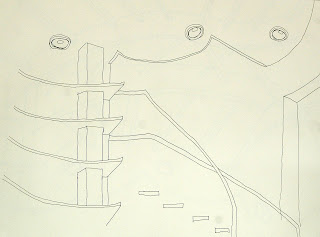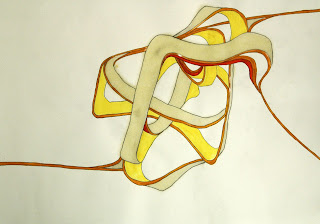At today’s lecture Jonathan showed us a T-shirt design by Nadia Plesner. She designed the drawing on the T-shirt as a part of her campaign called Simple Living (which was a TV show with Paris Hilton and her best friend travelling around America and making a fool out of themselves). She started this campaign to raise awareness about how media can manipulate our life, our thinking, our opinion. She found it very upsetting that during the genocide and other atrocities was happening in Darfur in 2007 all news was about Paris Hilton going to jail. So she designed this T-shirt with a naked black kid wearing a Louis Vuitton bag and holding a chivava as Paris does. Her idea was if carrying a designer bag and a small, ugly dog is enough to be the top sensation in the media than why we don’t give these accessories to people who really deserve attention. So she did. But Louis Vuitton wasn’t happy about the campaign. They thought that was a violation of their copyright even Plesner wanted to donate the whole profit to Darfur.
So was it a successful design? I think it was. Jonathan said it didn’t solve anything. This is probably true. But I think start a conversation is almost as important as to solve a problem. Well, people who don’t care about real news but gossips probably wouldn’t get it anyway. But people who do care about news will buy the design, wear the T-shirt and spread the information. That was just a lucky coincident that Louis Vuitton sued her. It made the whole thing even bigger. It went into the media and became a big deal. Famous people started to wear her T-shirt like Don Cheadle and Mia Farrow so it got even more attention. People started to react by writing emails and it definitely made them think. Although she had to finish the campaign because she couldn’t pay 22,500$ per a day to satisfy Louis Vuitton she donated 30,000$ altogether to Divest for Darfur.
So it did started a conversation, it did raise awareness and it gave her new ideas how to go forward and try out different ways to solve this problem. I totally respect her and her design. I just started to think what if she wouldn’t use a Louis Vuitton bag. I don’t think any ordinary bag would have the same message. It had to be a designer one. Paris wouldn’t wear a Primark bag doesn’t matter how cute it is. It is the power of context. Although she could have use another designer bag and the whole story could be different.
Another interesting point about today’s lecture was Jonathan’s question. Do you feel yourself lucky or unlucky? I usually feel lucky but sometimes just totally the opposite. He mentioned an experiment when people had to count heads in a newspaper. There were two types of people. One group count the heads exactly and people from the other group found a little article said if you find this stop doing the experiment and claim your £200. These people said before the survey that they feel lucky in their life. The message is if you pay attention for details you can be lucky any time but if you concentrate on one thing you will miss your opportunities. I have to say it’s completely true. I’m such a daydreamer and I love to be lost in the details. Guess what? I keep finding money for example. I found £90 in the Overgate shopping centre one day. I took it to the customer service but nobody asked for it so I got it back. I always notice pennies on the street too but not always pick them up just when I feel I have to.

















































































